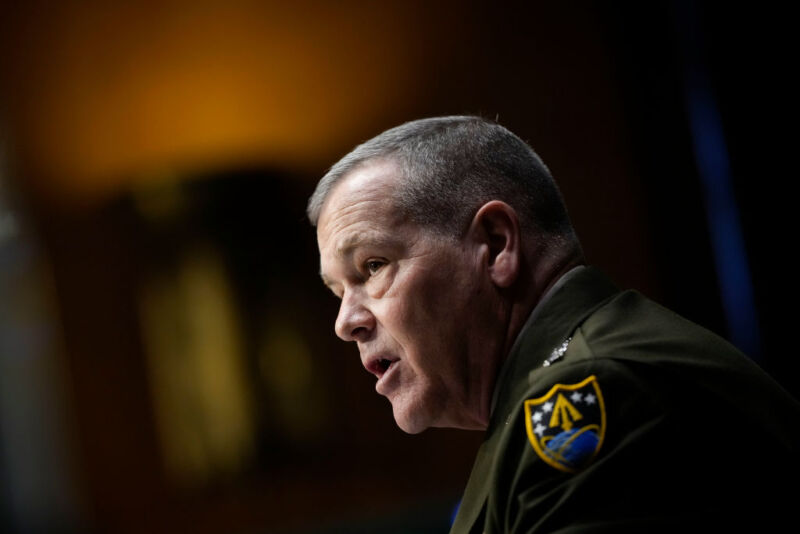
Drew Angerer/Getty Images
The leader of the United States Space Command, an Army general named James H. Dickinson, said Wednesday that megaconstellations such as SpaceX’s Starlink network have played an important role in Ukraine’s efforts to deter an invasion by Russia.
“We are seeing for the first time what a megaconstellation means to the world,” Dickinson said. “That provides such resiliency and redundancy in terms of maintaining satellite communications in this example. That is powerful, and the department is moving in that direction.”
Dickinson made his remarks at the Aspen Security Forum. As leader of the Space Command, Dickinson is responsible for the command and control of all US military forces in outer space. He said Starlink had facilitated communications among Ukraine’s armed forces and that other commercial companies had provided essential observation services through means such as synthetic aperture radar, which can observe at night and through clouds.
Distributed the risk
Additionally, Dickinson said that by having a constellation of distributed satellites, it was more difficult for Russia to take countermeasures.
“Having a megaconstellation, quite frankly, frustrates our adversaries,” he said, “because you don’t know how many satellites it would take to have any kind of a degradation to that architecture, or which one if you had to pick one, you would have to, you know, have an effect against.”
Last October a deputy director in Russia’s foreign ministry, Konstantin Vorontsov, said the use of Western commercial satellites by Ukraine established “an extremely dangerous trend.” While Vorontsov did not specifically name any satellites, he almost certainly was referring to SpaceX’s Starlink satellite constellation, which has been used by Ukrainian soldiers for communications and for tracking Russian troop and tank movements.
The use of civilian satellites for wartime purposes, Vorontsov said, essentially made them military targets. Dickinson was asked how Space Command would respond to an attack on a US commercial satellite by a foreign adversary. Basically, he punted on the question.
“I do have a mission area protecting and defending, and that’s widely known, assets on orbit,” he replied. “But to be honest with you, those have to be directed to me by, you know, my boss, and my boss’s boss, eventually if that were to happen.”
At the time that US Space Command was reestablished in 2019, Dickinson said the organization was tracking about 25,000 objects in space—active and defunct satellites, as well as old rocket stages, debris, and more. Now that number is close to 50,000, he said. Some of this is due to the increasing number of satellites, but a large amount has been caused by activities such as Russia’s anti-satellite test in 2021.
Striking a balance
Dickinson said that some of this growth has come down to new objects identified and tracked by commercial providers. At present, he said, Space Command works with 133 commercial space companies, which are performing various functions from satellite communications to space domain awareness. He said these partnerships have proven potent in enhancing the capabilities of the US Department of Defense.
But does this increasing reliance on commercial companies—which have their own priorities and at times mercurial leadership—not also threaten the ability of Space Command to do its job? What if a company decided that it no longer wanted its products to be used as part of the military’s warfighting capabilities?
“It’s a balance,” Dickinson said. “In other words, we’re not going to be all commercial. We may not be all military. But as we look at our mission areas within US Space Command and the Department of Defense, there is a balance between what is purely military and what might be relied upon as a service.”
Already, he said, the US military relies heavily on commercial services in other domains, such as at sea, for shipping, and in the air, such as using commercial aircraft for some legs of troop deployments. Still, he acknowledged, space is a relatively new domain, and the extent to which the military relies on commercial services for its duties is still being worked out.

